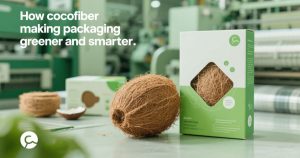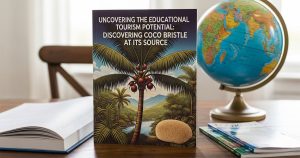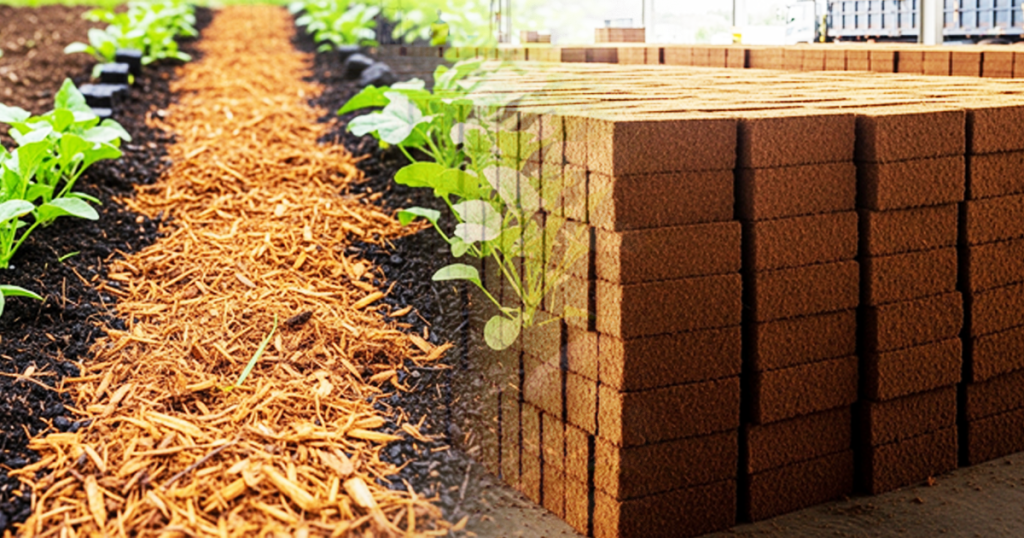The Silent Threat Beneath Our Feet
Soil erosion remains one of the most pressing environmental concerns of the 21st century. As global land degradation accelerates due to deforestation, overgrazing, and climate-induced weather extremes, the need for sustainable, nature-based solutions has never been more urgent.
As a researcher who has dedicated the past decade to studying cocopeat and its multifaceted applications, I have found a compelling and natural ally in the form of coco fiber a by-product of the coconut industry.
What Is Coco Fiber?
Coco fiber, also known as coir fiber, is derived from the husk of the coconut fruit. Traditionally discarded or burned, this fibrous material has gained recognition for its exceptional resilience, water retention, and biodegradability.
While its use in horticulture and hydroponics is well documented, its capacity to mitigate soil erosion remains an underexplored but promising frontier.
How Coco Fiber Fights Erosion
The structure of coco fiber makes it ideal for erosion control. Its natural mesh-like configuration binds soil particles together, reducing runoff and maintaining soil integrity. When laid over vulnerable terrain, especially slopes and riverbanks, it functions as a biodegradable barrier, allowing vegetation to take root while buffering against rainfall and surface flow.
Field trials in coastal and highland regions have demonstrated coco fiber’s ability to reduce topsoil loss by as much as 60% compared to bare soil. This efficacy is not just theoretical it is observable in regions where traditional erosion control methods have failed due to cost or climate limitations.
Sustainability at Its Core
What sets coco fiber apart from synthetic erosion-control materials is its eco-compatibility. Unlike plastic geotextiles that remain in the environment for decades, coco fiber biodegrades within 2 to 3 years, enriching the soil as it breaks down. This makes it ideal for temporary protection that supports long-term land restoration.
Moreover, sourcing coco fiber does not require deforestation or mining. The global coconut industry already produces millions of tons of husk waste annually. Utilizing this waste for erosion control not only reduces environmental impact but also supports circular economies in coconut-producing countries.
Application and Best Practices
Coco fiber can be applied in several forms: coir mats, erosion control blankets, and fiber logs. These are especially effective in reforestation projects, riverbank rehabilitation, road embankments, and agricultural fields prone to seasonal flooding.
Installation is straightforward. After preparing the site, coir mats are laid down and secured with biodegradable stakes or pegs. Native plant species are then seeded through the mat’s mesh, allowing root systems to intertwine with the fiber. Over time, as plants establish, they take over the role of stabilization, making the intervention self-sustaining.
Real-World Case Studies
In 2022, a pilot project in West Java, Indonesia employed coco fiber blankets along a frequently flooded hillside. Within six months, native grasses and shrubs had successfully anchored themselves, reducing slope slippage during the rainy season by 70%.
Similarly, in Kerala, India, where coconut farming is widespread, government-backed initiatives have started using coir logs to reinforce canal banks. These efforts not only restore degraded lands but also create jobs in rural communities for processing and deploying coco fiber products.
Challenges and Future Research
Despite its advantages, coco fiber is not a one-size-fits-all solution. Its effectiveness varies with soil type, slope gradient, and climatic conditions. Ongoing research is exploring how to enhance coco fiber treatments with microbial inoculants or polymer binders to further increase performance in extreme conditions.
Another area under development is the combination of coco fiber with biochar or compost, which could amplify soil regeneration and carbon sequestration. These innovations are promising steps toward creating multifunctional erosion-control systems that go beyond just soil protection.
A Natural Shield for a Fragile Earth
As we seek sustainable solutions for land degradation, nature offers many tools if we are willing to look closely. Coco fiber stands as a testament to this, transforming agricultural waste into a natural defense mechanism for some of the planet’s most vulnerable soils.
Through further research, policy support, and collaborative fieldwork, coco fiber could transition from a niche application to a mainstream solution in global land restoration efforts.







